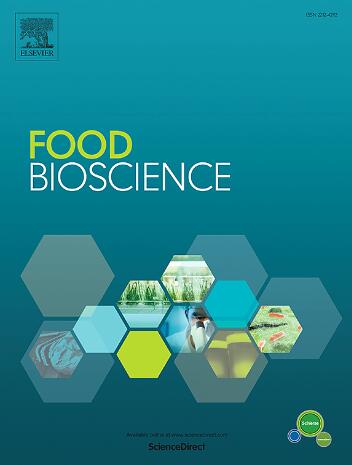Genomic and transcriptomic analyses identify three new citrate transporters in Pichia fermentans with potential for citric acid reduction in fruit wines
IF 4.8
1区 农林科学
Q1 FOOD SCIENCE & TECHNOLOGY
引用次数: 0
Abstract
Excess citric acid accumulation in fruit wines, particularly those made from kiwi fruit and citrus, contributes to high acidity, adversely impacting sensory properties such as taste balance and consumer acceptance. In this study, Pichia fermentans JT-1-3, a non-Saccharomyces yeast capable of efficiently metabolizing citric acid, was investigated through whole-genome sequencing and transcriptomic analysis. The genome of P. fermentans JT-1-3 was assembled into 15 contigs (12.14 Mb) and annotated with 7728 protein-coding genes. Transcriptome analysis revealed metabolic adaptations in P. fermentans JT-1-3 and identified three putative citric acid transporters (contig1.236, contig1.237, and contig1.238). The expression of these predicted genes was upregulated in response to citric acid, as confirmed by quantitative reverse transcription PCR (RT-qPCR). Fluorescence microscopy confirmed the localization of the three candidate proteins to the plasma membrane. Bioinformatic analysis further revealed their sequence homology and predicted secondary structures. These findings establish a molecular foundation for optimizing P. fermentans as a fermentation adjunct to modulate acidity in fruit wines, thereby enhancing product quality and broadening its potential application in the wine industry.

基因组学和转录组学分析鉴定了发酵毕赤酵母中三个新的柠檬酸转运蛋白,它们具有减少果酒中柠檬酸的潜力
果酒中过量的柠檬酸积累,尤其是那些由猕猴桃和柑橘制成的果酒,会导致高酸度,对口感平衡和消费者接受度等感官特性产生不利影响。本研究以能高效代谢柠檬酸的非酵母菌Pichia fermentans JT-1-3为研究对象,通过全基因组测序和转录组学分析进行了研究。发酵p.f ermentans JT-1-3的基因组被组装成15个contigs (12.14 Mb),共注释了7728个蛋白编码基因。转录组分析揭示了P. fermentans tt -1-3的代谢适应性,并鉴定出三种可能的柠檬酸转运蛋白(contig1.236、contig1.237和contig1.238)。定量反转录PCR (RT-qPCR)证实,这些预测基因的表达在柠檬酸的作用下上调。荧光显微镜证实了三个候选蛋白在质膜上的定位。生物信息学分析进一步揭示了它们的序列同源性,并预测了它们的二级结构。这些发现为优化发酵假单胞菌作为调节果酒酸度的发酵助剂,从而提高产品质量和扩大其在葡萄酒工业中的潜在应用奠定了分子基础。
本文章由计算机程序翻译,如有差异,请以英文原文为准。
求助全文
约1分钟内获得全文
求助全文
来源期刊

Food Bioscience
Biochemistry, Genetics and Molecular Biology-Biochemistry
CiteScore
6.40
自引率
5.80%
发文量
671
审稿时长
27 days
期刊介绍:
Food Bioscience is a peer-reviewed journal that aims to provide a forum for recent developments in the field of bio-related food research. The journal focuses on both fundamental and applied research worldwide, with special attention to ethnic and cultural aspects of food bioresearch.
 求助内容:
求助内容: 应助结果提醒方式:
应助结果提醒方式:


